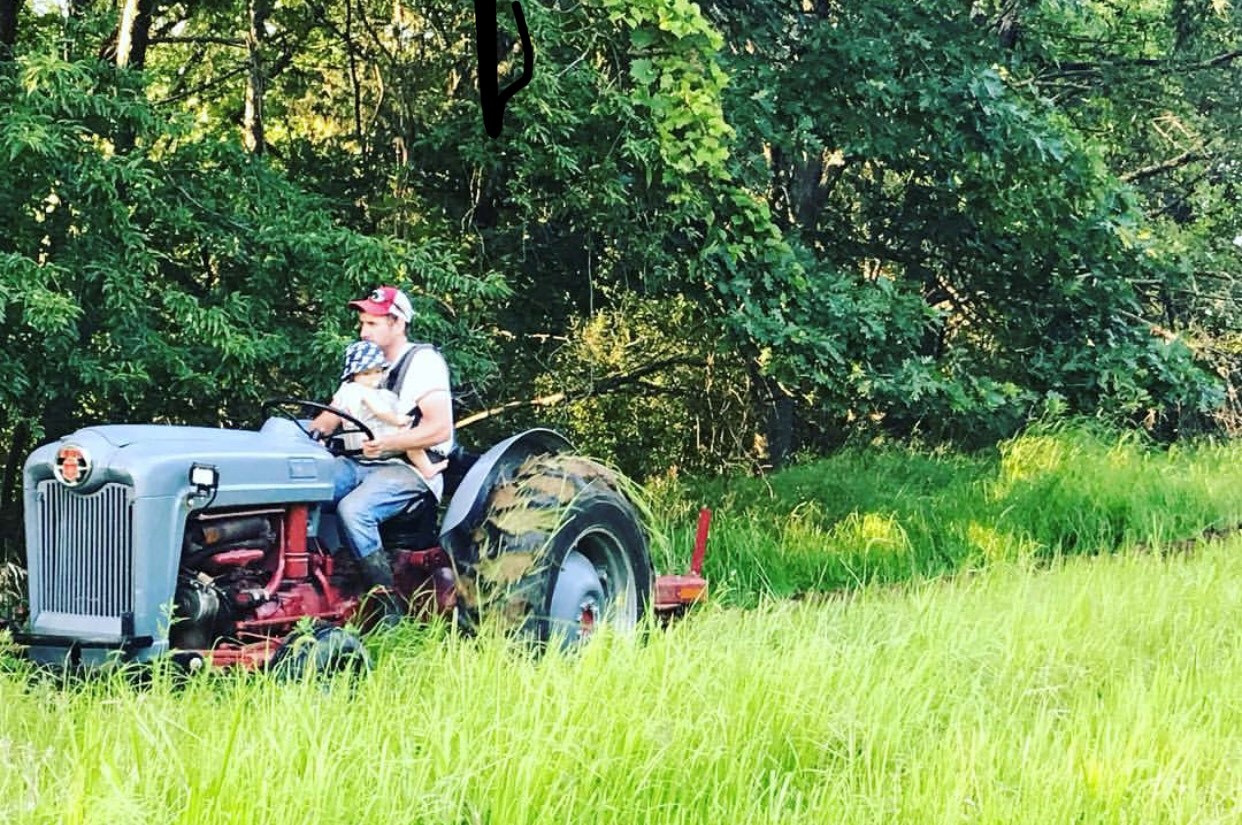Food plots. Everyone seems to be talking about them in the hunting world. If you’re anything like me, your expertise is limited. But that doesn’t mean you don’t want to learn more! Running an outdoor television show has exposed me to many different styles of hunting between characters. From the public land ground and pound experts, to the traditional archers of the Northwoods, small acre parcel bouncers, and food plot experts. The film team is diverse and I love learning from each of them. Matt Hasel is a film-crew member of Chase Nation and dairy farmer/owner of Hasel Farms out of Lake Mills, WI. Matt is a food plot expert and was happy to share some of his knowledge.
Sam Ubl: What is your favorite early season food plot and why?
Matt Hasel: Perennial leafy greens. I’ve found deer prefer green leafy plants throughout summer and early fall. This eventually transitions to forage oats later in the fall after the frost. Alfalfa and clover are hard to beat early season. They’re perennial, protein rich, and green up early. But green plots require maintenance. Use a brush hog, or lawn mower, to mow down the green plot three times per season. As clover and hay mature, they become bitter. Mowing the plot takes off the old growth and promotes freshness. Just be careful not to cut it too short or you’ll risk it burning after some hot sunny days.
SU: When is the best time to plant an Alfalfa and/or Clover green plot?
MH: Alfalfa is forgiving. You can plant your hay as soon as the ground thaws in spring. Even if old man winter sneaks his way into spring for a last-minute blizzard or some unseasonably cold weather, alfalfa will survive and germinate into plush green.
SU: If you had to pick one food source to plant and hunt over all season long, what would it be?
MH: Standing soy beans. Green leafy soy beans are money in the early season. If left standing into the late season, they will continue drawing in deer until the very last day. Deer love to nip the leaves of soy beans when they’re green. They’ll even consume the beans in the late season when the leaves are gone and the field is brown. Soy beans are very forgiving. They love comfortable seed beds, but they can be broadcast in mass quantity without over-crowding concerns.
SU: What is the most difficult crop to plant and why?
MH: Corn. Corn hates competition. It’s sensitive and needs space. Seed depth is critical. Furthermore, determining what that seed depth should be depends on soil type. For example, sandy soil may require more depth. When I plant rich dark soil with corn, anywhere from 30,000 to 34,000 seeds per acre is average. However, sandier soil may mean you have to limit the land to 28,000 seeds per acre, or so. First and foremost, you need to get your soil sampled to know what you’re working with.
SU: What does a soil sample tell you?
MH: A soil sample will provide PH levels and nutrient levels. If you have a high PH level, you may consider putting lime down to neutralize it. Dairy farming means lots of manure. Ever drive through the countryside with your windows down in the summer and suddenly smell manure? Farmers spread manure over the soil in the fields because it holds moisture and nitrogen. That fertilizes the soil and promotes germination of the seeds.
SU: How do you clear an area and prep the soil for tilling?
MH: The first thing I do when I start a food plot is mow off the area with my brush hog. Let the plot green up for about a week. Those fresh young shoots are easier to kill off than tall mature weeds and grasses. Controlled burns work well to kill off the remaining vegetation on the plot. But herbicides do just as good of a job and they’re safer if you don’t have much experience.
RoundUP and 2, 4-D Weed Killer will do the trick. However, each requires a window of time after applying before planting new seeds. 2, 4-D has a lengthier residual than RoundUp. After it does it’s primary job, it remains in the soil for a while. Make sure you understand the residual of any herbicides, so you know how long to wait before planting.
After the foliage is cleared on the plot, till it up to loosen the soil and create a seed bed. I typically go back in and kill off any survivors after tilling before I plant seeds. But it all depends on how much time you have. If you’re driving to a piece of land farther away with only a day to get it done, then you can certainly do it in a day. However, therein lies the difference between average and excellent results.
SU: Food plot talk is usually coupled with the mention of Brassicas and Chicory. To the ordinary fella without experience in the world of food plots and farming, these are foreign words. What do they mean?
MH: The term brassica represents a family of leafy vegetables, like kale and turnips. They’re especially popular with late season hunters, as the molecular effects after a couple good frosts makes the leaves tastier. If you’re limited to a single food plot you may not want to cover the area in brassicas. They may not be the first food choice at that time of the year. I would recommend combining chicory and clover into the mix. This will give you food plot potential to draw deer all season long. Chicory is a leafy herb and is a low maintenance perennial. It grows thick, but I rarely plant chicory alone. I’d rather mix a plot with chicory and clover, and if there’s room, maybe a row of forage oats.






